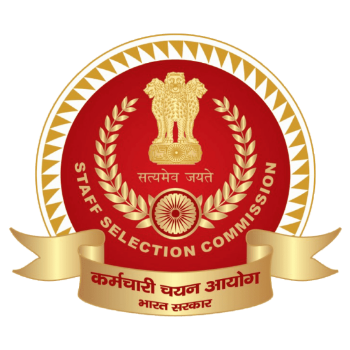Staff Selection Commission (SSC): A Gateway to Govt. Jobs in India

Subscribe for Quick Notifications
Staff Selection Commission (SSC) stands as an important institute in the government recruitment scenario in India and plays a vital role in shaping the workforce of the Government of India. Established in 1975, SSC has been instrumental in selecting eligible candidates for various posts in ministries, departments and subordinate offices ensuring transparency, fairness and efficiency in the recruitment process. Its reach and impact are immense, providing countless opportunities to interested individuals to contribute to the development of the country. This comprehensive analysis highlights various aspects of the SSC, exploring its history, functions, examination procedures and its impact on both job seekers and the Indian bureaucracy.
1. Historical Evolution:
The establishment of the SSC can be traced back to the recommendations of the A. Bhattacharyya Committee, which emphasized the need for a centralized agency to streamline the recruitment process for government jobs. Subsequently, the Government of India, in pursuance of the resolution of the Ministry of Home Affairs, constituted the Staff Selection Commission in 1975. The primary objective was to alleviate the burden on various government departments and ministries by consolidating the recruitment process and introducing a standardized procedure.
2. Organizational Structure:
The SSC operates under the Department of Personnel and Training (DoPT), Ministry of Personnel, Public Grievances, and Pensions. The Commission is headed by a Chairman, who is assisted by two Members, and a Secretary-cum-Controller of Examinations. The organizational structure also includes regional and sub-regional offices across the country, responsible for conducting examinations and facilitating the recruitment process at the regional level.
3. Functions of the SSC:
3.1 Conducting Examinations:
The primary function of the SSC is to conduct examinations for various government positions. These examinations are categorized into two main groups: the SSC Combined Graduate Level Examination (SSC CGL) for graduate-level posts and the SSC Combined Higher Secondary Level Examination (SSC CHSL) for 10+2 level posts. Additionally, the SSC conducts examinations for junior engineer positions, stenographers, multi-tasking staff, and others, catering to the diverse needs of government departments.
3.2 Recruitment for Different Posts:
The SSC facilitates the recruitment process for a wide range of posts in various government departments and ministries. This includes administrative roles, tax assistants, inspectors, clerks, data entry operators, and more. The scope of recruitment ensures that the SSC plays a crucial role in shaping the workforce of the Indian government.
3.3 Selection of Suitable Candidates:
One of the key objectives of the SSC is to identify and select the most eligible candidates for government positions. The selection process involves a combination of written examinations, skill tests, and interviews, ensuring that candidates possess the required skills, knowledge, and aptitude for the specific job profiles.
3.4 Promoting Transparency and Fairness:
Transparency and fairness are fundamental principles upheld by the SSC. The commission adheres to a merit-based selection process, ensuring that candidates are chosen based on their performance in the examinations and other assessment stages. This commitment to transparency helps build trust among candidates and the public.
4. Examination Processes:
4.1 SSC Combined Graduate Level Examination (SSC CGL):
The SSC CGL is one of the most sought-after examinations conducted by the commission. It comprises four tiers – Tier I and Tier II are computer-based examinations, while Tier III is a descriptive paper, and Tier IV is a skill test or document verification. The examination assesses candidates' proficiency in English, mathematics, general awareness, and reasoning, making it a comprehensive evaluation of their capabilities.
4.2 SSC Combined Higher Secondary Level Examination (SSC CHSL):
Geared towards candidates who have completed their 10+2 education, the SSC CHSL examination consists of three stages – Tier I, Tier II, and Tier III. The first two tiers are computer-based, testing candidates on English language, general intelligence, quantitative aptitude, and general awareness. Tier III involves a skill test or typing test, depending on the nature of the position.
4.3 Other Examinations:
Apart from CGL and CHSL, the SSC conducts examinations for various other positions. The Junior Engineer (JE) examination assesses candidates for engineering roles, while the Stenographer examination evaluates proficiency in stenography. The Multi-Tasking Staff (MTS) examination is conducted for positions requiring basic educational qualifications.
5. Impact on Job Seekers:
5.1 Widening Employment Opportunities:
The SSC plays a pivotal role in widening employment opportunities for aspirants across the country. By conducting examinations for a diverse range of positions, the commission provides candidates with the chance to secure government jobs at different educational and skill levels.
5.2 Enhancing Employability Skills:
The examination processes designed by the SSC are not only aimed at assessing knowledge but also at evaluating candidates' aptitude and skills. This focus on a holistic assessment enhances the employability skills of candidates, making them well-prepared for the challenges of government positions.
5.3 Social and Economic Mobility:
For many aspirants, securing a government job through the SSC is a pathway to social and economic mobility. Government jobs often come with stability, financial security, and various perks, making them highly desirable. The SSC's role in this process cannot be overstated, as it provides a fair and transparent platform for candidates from diverse backgrounds to compete on merit.
Challenges and Criticisms:
6.1 Examination Irregularities:
The SSC has faced its share of controversies, including allegations of irregularities and malpractices in examinations. Instances of question paper leaks and discrepancies in the evaluation process have raised concerns about the commission's ability to maintain the integrity of its examinations.
6.2 Delay in Recruitment Process:
Another criticism leveled against the SSC is the delay in the recruitment process. The time taken from conducting examinations to finalizing appointments has been a point of contention, with candidates often expressing frustration about the extended waiting periods.
6.3 Regional Disparities:
The SSC's regional structure has also been a subject of criticism. Disparities in the difficulty level of examinations and variations in the selection process across regions have led to concerns about the fairness of the system. Efforts to address these regional imbalances are crucial for ensuring equal opportunities for candidates.
7 Reforms and Future Prospects:
7.1 Technological Integration:
To address concerns related to examination irregularities and streamline the recruitment process, the SSC has been actively embracing technological solutions. The adoption of computer-based examinations and online processes has not only enhanced efficiency but also reduced the scope for malpractices.
7.2 Transparency Measures:
In response to criticisms regarding transparency, the SSC has taken measures to enhance accountability and openness in its operations. Providing detailed answer keys, releasing question papers after examinations, and maintaining clear communication with candidates are some of the steps taken to improve transparency.
7.3 Skill Development Initiatives:
Recognizing the importance of skill development, the SSC has integrated skill tests into its examination processes. This focus on practical skills ensures that candidates not only possess theoretical knowledge but also the hands-on abilities required for specific job roles.
7.4 Regional Equity:
Efforts to address regional disparities are ongoing, with the SSC working towards creating a standardized and equitable system across all regions. Equalizing the difficulty level of examinations and ensuring uniformity in the selection process are essential for building trust among candidates.
Final Observation:
At the end the final observation is that, the Staff Selection Commission (SSC) plays a crucial role in the recruitment landscape of India, providing a standardized and transparent platform for candidates to secure government positions. Through its various examinations and recruitment processes, the SSC has not only widened employment opportunities but also contributed to the social and economic mobility of countless aspirants.
While the commission has faced challenges and criticisms, its commitment to technological integration, transparency, and regional equity demonstrates a proactive approach to addressing concerns. As the SSC continues to evolve, it remains a cornerstone in the nation's efforts to build a competent and diverse bureaucracy that can meet the challenges of governance in the 21st century.
Share This Post

About the Author
Full Stack Developer, Professional Blogger and Content Writer
I have more than 7 years of experience as a content writer. With the purpose of providing valuable and meaningful content, I craft clear, informative pieces that empower readers on their career and learning journeys.
- Railway Group D Recruitment 2024 for Various Departments | Last Date: 22-Feb-2025
- NTPC Assistant Executive Recruitment 2025 | Last Date: 01-Mar-2025
- Air Force Agniveer (Sports Quota) Vacancy 2025 | Last Date: 22-Feb-2025
- Jammu BECIL-AIIMS Various Vacancy 2025 | Last Date: 24-Feb-2025
- RRB Group D Online Form 2025 | Last Date: 22-Feb-2025
- Indian Coast Guard Navik GD Recruitment 2025 Apply Online Form | Last Date: 25-Feb-2025
- Indian Navy SSC Officers Jan 2026 Batch Recruitment 2025 | Last Date: 25-Feb-2025
Popular Quiz:
- 20 Current Affairs MCQ | 23 February 2025
- 20 Current Affairs MCQ | 22 February 2025
- Top Current Affairs 15 MCQ | 15 February 2025
- 15 MCQs on current affairs and static general knowledge for 14 February 2025
- 25 Current Affairs MCQ Quiz | 7th Jan 2025
- 15 MCQ Quiz Current Affairs in Hindi Date- 03-Oct-2024
- 30 MCQ Quiz Current Affairs in Hindi Date- 28-Sep-2024
- 25 MCQ Joint Entrance Examination JEE 2024 Quiz with Correct Answers
- Republic Day 2024 Quiz with Answers : 26 January Celebration Part I
- 25 Unknow Facts about Netaji Subhas Chandra Bose | Sarkari Jobs Multiple Choice Quiz
Recent Blogs:
- UGC-NET December 2024 Examination: Postponement & Re-Schedule Dates
- Haryana NMMS Scholarship 2024: A Comprehensive Guide
- The Haryana Parali Protsahan Yojana (HPPY)
- संदेशखाली : उत्तर भारत का स्वर्ग
- Sandeshkhali : An Unexplored Paradise
- NTA CSIR UGC NET / JRF Exam June 2024 Apply Online Form
- RRB NTPC Recruitment 2024: Get Ready for Bumper Bharti
- RBSE 10th Result 2024 Date-Time & Direct link
- PRD Bihar Recruitment 2024 for Accountant cum IT Assistant (6570 Posts)
- HSSC Haryana Police 6000 Constable (GD) Recruitment 2024 | Last Date Extended
- BPSC Block 318 Horticulture Officer Recruitment 2024 | हिन्दी में
- BPSC Block 318 Horticulture Officer Recruitment 2024 | Last Date Extended
- The Citizenship Amendment Act: CAA का क्या है ? जानिए|
- The Citizenship Amendment Act (CAA): All You Should Know
- TS DSC Recruitment 2024: A Comprehensive Guide for Aspiring Teachers
Current Affairs:
- SSC CHSL में पूछे जाने वाले 90 महत्वपूर्ण प्रश्नोत्तर
- SSC परीक्षा के लिए 130 सबसे महत्वपूर्ण प्रश्नोत्तर
- सामाजिक एवं धार्मिक आन्दोलन के 50 प्रश्नोत्तर
- 07 October 2024 Current Affairs
- 07 October 2024 Current Affairs | हिन्दी
- 03 October 2024 Current Affairs
- 03 October 2024 Current Affairs | हिन्दी
- सामान्य ज्ञान प्रश्नोत्तरी | 30-09-2024
- 30 सितंबर 2024 Current Affairs | हिन्दी
- India Today in History | 1st Day of March
